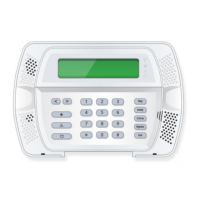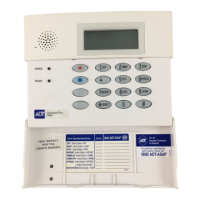Do you have a question about the ADT FOCUS CADET and is the answer not in the manual?
| Category | Security System |
|---|---|
| Type | Wireless |
| Sensors Included | Door/Window Sensors, Motion Detector |
| Control | Keypad, Mobile App |
| Monitoring | 24/7 Professional Monitoring |
| Power | Battery Backup |
| Connectivity | Cellular |
Introduces the ADT FOCUS® CADET as a programmable, user-friendly security system.
Highlights the system's attractive, menu-driven panel, group control, manual activation, bypass ability, and user capacity.
Describes the control unit as the system's central microcomputer managing all security functions.
Explains system monitoring of up to 64 points in four groups, allowing flexible naming and control.
Details how card/key readers act as gateways, tracking activities and supporting users with varying privileges.
Covers system event recording, storing up to 512 events and providing real-time printouts.
Discusses the rise of security systems and the issue of false alarms, their causes and consequences.
Lists actions to prevent false alarms, including system testing, pets, and janitorial services.
Explains the QUICK START section is a crash course for new users to operate the panel in under an hour.
Describes the panel interface (LCD, keypad) and divides functions into Programming, System, and Test.
Shows and explains the display when the system is idle, including help, group status, and ID entry.
Details how the system annunciates alarms (fire, burglary) and provides specific notes for burglary and holdup.
Details the process of entering a personal six-digit ID number and the panel's active/timeout behavior.
Describes menu navigation using 'More/First' and 'Quit/Previous' selections.
Describes the interactive operating panels, keypad, display, and selector buttons.
Details Action Menu 1 options: ?, Lesson, See alarms, Quit, Turn on, Reset, More.
Details Action Menu 2 options: ?, See points, Test, Change close time, Previous, More.
Details Action Menu 3 options: ?, Bypass, History, Status, Time, Previous, More.
Details Action Menu 4 options: ?, SysInfo, ID codes, Name pnt/gps, Load, Previous, First.
Explains system customization, reprogramming via panel, and the need for privilege levels.
Discusses user ID codes, their structure (user number + PIN), and the requirement for a valid ID to operate the system.
Outlines the procedure to add, change, or delete users using specific privilege levels.
Explains how to assign or change user access to burglary groups, privilege levels, and codes.
Details how to periodically check and update the system's real-time clock and calendar.
Describes accommodating two daily schedules (open/close times) per day for each Burglary (BA) group.
Explains how to manage up to 14 holiday descriptions and dates, affecting facility access.
Explains how to change group and point descriptions for better system definition.
Covers the primary operation of turning on burglary protection, including exit delay procedures.
Explains the procedure for turning off burglary protection, including entry delay warnings.
Provides steps to reset current alarms after a situation has returned to normal.
Explains the system stores events and guides on accessing and printing the event history log.
Details the procedure for audibly testing burglary protection points.
Outlines steps for visually testing points, activating devices, and checking history.
Explains how to test selected Burglary groups to ensure they are ready to turn on.
Provides instructions for testing holdup, fire, and supervisory devices, with a caution about disabled functions.
Details testing the system's bell and operating panel display without affecting other operations.
Lists common trouble/error messages, their descriptions, and recommended actions.
Explains various fire alarm codes and standards like NFPA 72.
Discusses code enforcement by the 'Authority Having Jurisdiction' (AHJ) and its role in reviewing designs.
Highlights the FOCUS® CADET's capabilities for fire detection and its suitability for combination systems.
Recommends establishing and practicing fire escape plans, including multiple escape routes and meeting points.
Outlines system limitations regarding intruders, power dependency, signal blocking, and user access.
Details limitations like alarm device effectiveness, telephone line issues, component failure, and maintenance.
Details the limited warranty terms, conditions, exclusions, and installation agreement.











